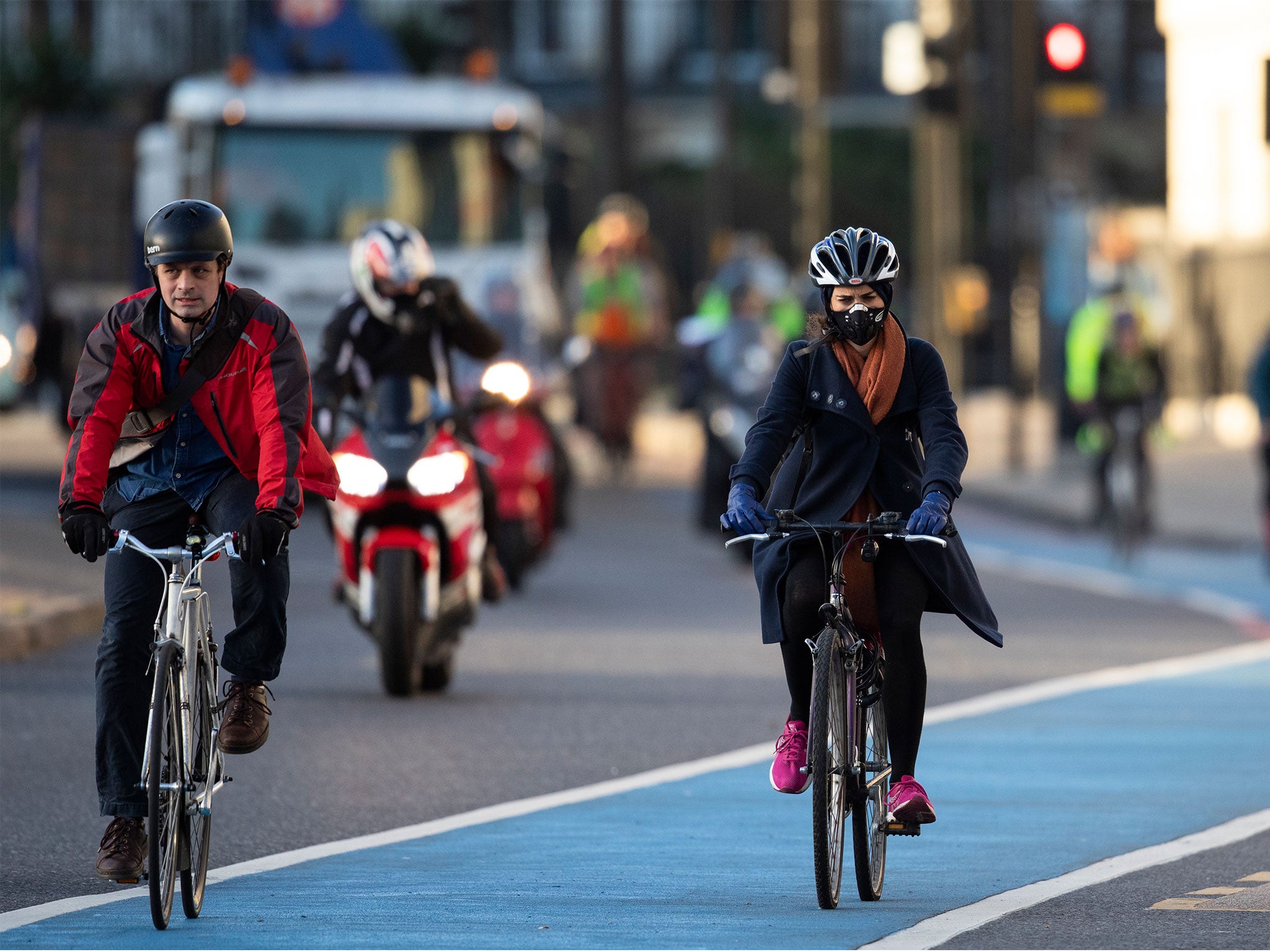The benefits of bike lanes are clear – but Britain is still lagging behind
The Dutch learnt how to build proper cycling infrastructure in the 1970s – but here progress is slow

Bicycles, as any smug cyclist will tell you, run on fat and save you money. Cars, on the other hand, run on money and make you fat.
But for many of those not already converted to the two-wheels-good, four-wheels-bad brigade, the well-publicised benefits of cycling – for your health and your bank balance, as well as the planet – are outweighed by the inherent risks of taking to two wheels in the UK’s traffic-clogged towns and cities.
The Dutch learnt how to build proper cycling infrastructure in the 1970s after a spate of road deaths, but the UK is still struggling to prove it takes the issue of safe cycling seriously. Survey after survey shows feeling unsafe on the roads is a major deterrent for new cyclists. One recent poll found almost half of respondents would be encouraged to use their bicycle if they weren’t forced to share the road quite so intimately with cars and lorries.
A visit to the continent shows how quickly and easily other countries seem to have found building properly segregated bike lanes – surely screwing rubber “armadillo” humps or plastic bollards into the road is much cheaper and quicker than the full blown road redesigns Transport for London and other local authorities seem to favour.
Now, a study suggests the benefits of high-quality bike infrastructure actually go far further than just protecting the cyclist. Fatalities among all road users fall dramatically when high-quality infrastructure is built, slowing traffic and forcing everyone on the roads to take greater care.
Even motoring association the AA backs the research with its conclusion that more bike lanes are needed. There is certainly an argument to be made that cyclists must also play a role in ensuring our shared public spaces are both safe and pleasant to use.
The high-profile death of a pedestrian hit by a cyclist with no brakes in east London, coupled with anecdotal evidence of red-light runners and pavement cyclists, can contribute to a sense that those on two wheels don’t abide the rules. And while that group are in the minority, their behaviour plays into the hands of those who would sooner see bike lanes returned to their former use than have more genuinely safe infrastructure for everyone to use.
But the progress (albeit limited) that has been made – particularly in the capital, but in other large cities such as Manchester – is under threat. Powerful lobbyists are putting pressure on decision-makers to rip up London’s flagship east-west cycle lane. Opponents of the hugely popular route, which provides space for a safe commute for thousands each day, have included the Licensed Taxi Drivers Association and Tory mayoral candidate Shaun Bailey.
Campaigns on social media juxtapose images of an empty bike lane hugging the Thames with lines of motor traffic disappearing into the distance as evidence that we need more, not fewer, lanes for cars and vans. So far, thankfully, those in charge of transport planning have not budged.
Subscribe to Independent Premium to bookmark this article
Want to bookmark your favourite articles and stories to read or reference later? Start your Independent Premium subscription today.
Join our commenting forum
Join thought-provoking conversations, follow other Independent readers and see their replies
Comments